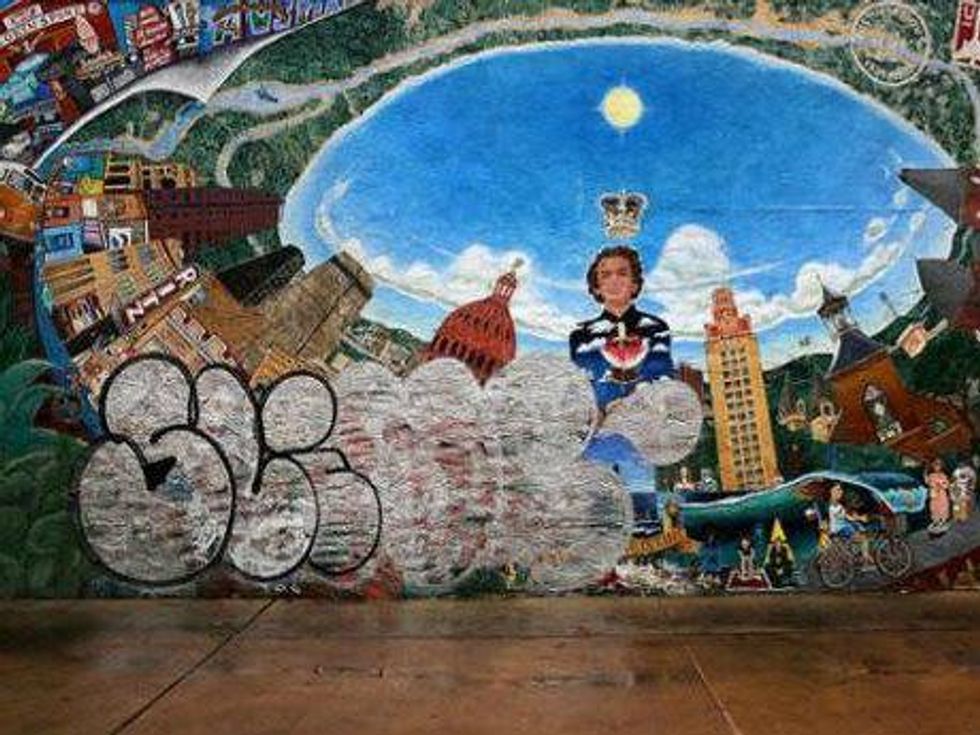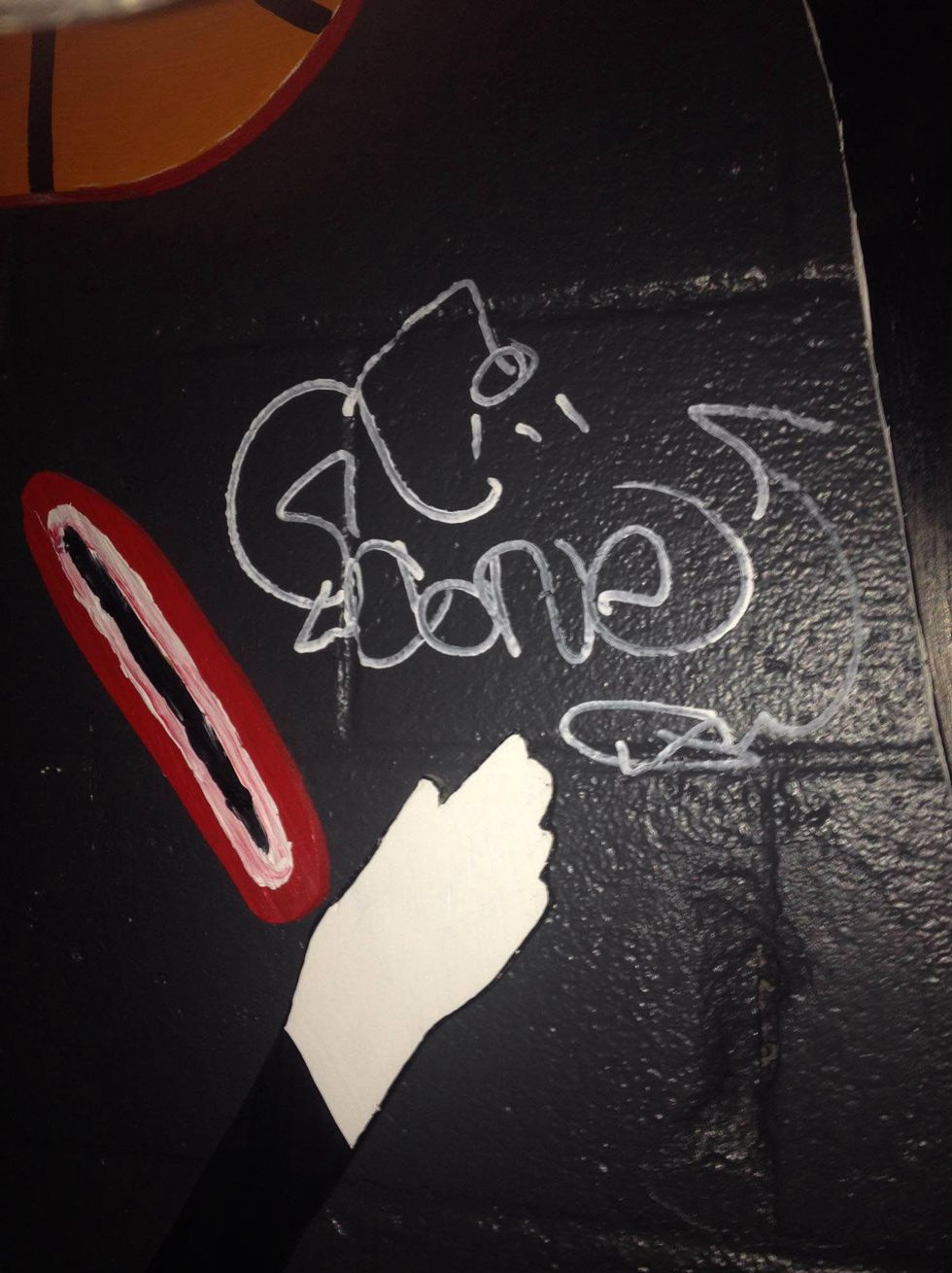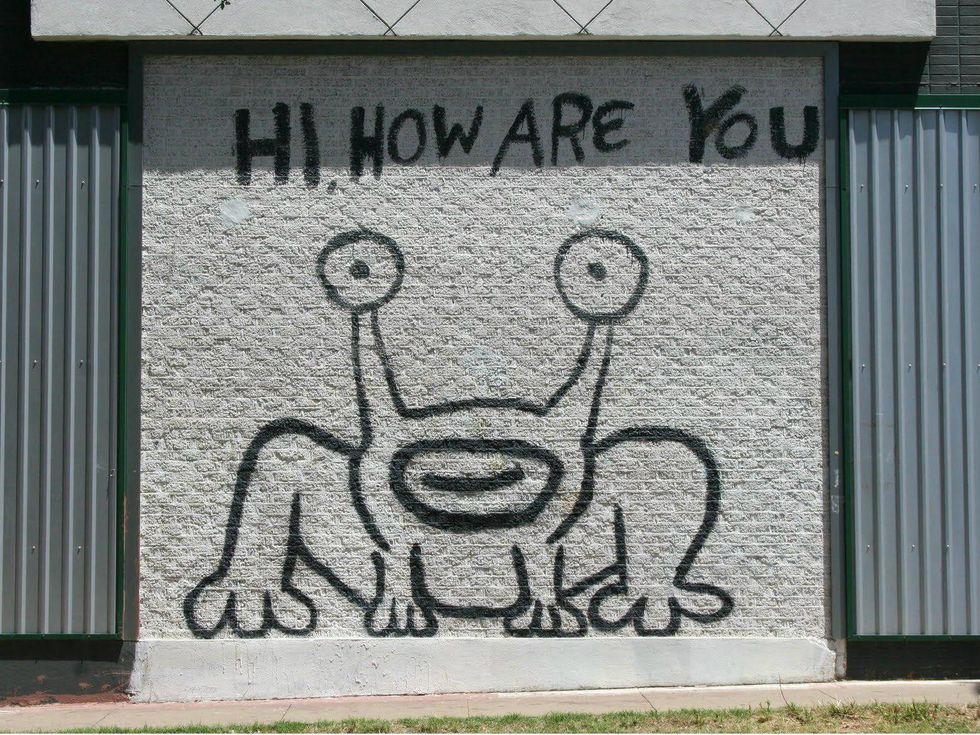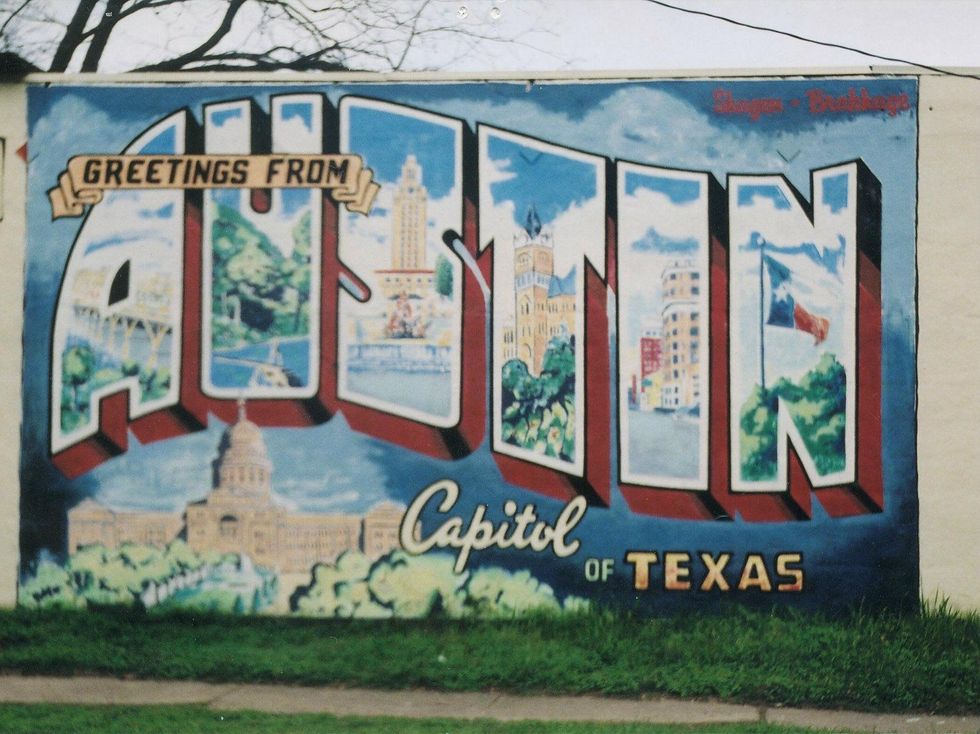Austin Murals under Attack
First audiences, now art: Why are Austinites continuing to be so rude?
Here is a short list of the things that we really enjoy in Austin: music, beer, sitting outside on patios, dogs, sitting outside on patios with dogs, great food, good breakfast tacos (or just tacos), and murals.
We've turned the "I Love You So Much" scribbled in cursive on the wall of a South Austin coffee shop into a tourist destination. "You're My Butter Half" has quickly become the backdrop of Christmas cards and engagement sessions. And Daniel Johnston's "Hi, How Are You?" is emblazoned on T-shirts of the chronically hip around the world.
But over the past few years there has been an alarming trend of people defacing the murals that make Austin such a treasure trove of free art. Back in 2010, Johnston's "Hi, How Are You?" was scribbled with nonsensical lines (and a joint coming out of the frog's mouth, which, c'mon, isn't even clever). People were outraged and the graffiti was removed.
On December 24, 2013, the mural was defaced again, this time with a series of F-bombs. Rebecca Guest, 32, was caught in the act by police and charged with a misdemeanor. Guest claimed she was personally offended by the mural and the story was reported across Texas and in outlets around the country, including theNY Daily News and Salon.
Just a few blocks away from the famous frog's 21st Street location is "Austintacious," the 40-year-old mural painted depicting a circular swirl of Austin life. Retouched in 1982 and again in 2002, the mural recently fell victim to an army of spray paint-wielding jerks who covered nearly a fourth of the original work. With the University Co-op unable to front the estimated $30,000 for restoration (as well as security camera installation), the original artists have launched an Indiegogo campaign to help fund the restoration. At press time, they were nearly a third of the way to their goal, having raised nearly $10,000.
And it's not just these old Austin staples that are falling victim to this kind of tagging nonsense. On Friday, Austin artist Silky Shoemaker had one of his brand-new paintings tagged at Cheer Up Charlie's (which has been open for less than two weeks at its new location). The Red River bar released photographs of the man believed to be responsible for defacing Shoemaker's work (and whom, we must remind you, has not been convicted of doing so) and public reaction has been swift with hundreds of people sharing the photo on social media.
Reaction to protect this artwork is indeed the silver lining to this swath of the destruction. When the iconic "Welcome to Austin" postcard mural on South First Street was in need of costly repairs — mainly caused by the unforgiving Texas sun — citizens rallied around, donating thousands of dollars to the campaign. The artists were able to restore the piece with the help of student artists and public interest was so piqued that one Bouldin Creek resident set up a time lapse camera to catch every moment of the restoration.
And these murals deserve to be protected. Unlike street art, which one expects to be fleeting in nature, thus making it special, murals are grand, usually commissioned and expensive to produce. The pay-out in tourist dollars is something that, as a city, we need to pay attention to. These images appear on everything from coasters sold at artist co-ops like Parts & Labour to coffee table books to licensing rights. They are as much a part of the Austin landscape as food trailers or those two guys who ride donkeys down South Congress.
It would be easy to say the instances were all a fluke, scribbled on by out-of-towners with no sense of pride. But what if that's not the case? What if this is just another example of Austin's cultural shift towards impropriety, something akin to the chronic roar of chatter Mikela Floyd discussed in her piece criticizing Austin audience's lack of respect for live performers. Or is this just kids being kids (or, in some cases, 32-year-olds being 32-year-olds)?
Whatever the impetus may be, there is solace in knowing that the Austin community continues to rally around these piece of art, recognizing that they're not only an economic driver, but an important element of our city's cultural lifeblood.
We only hope that is recent rash of vandalism is merely a trend, and not how we will expect Austin art to be treated in the future.





